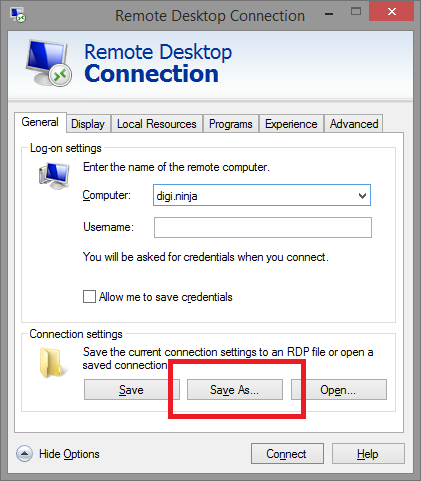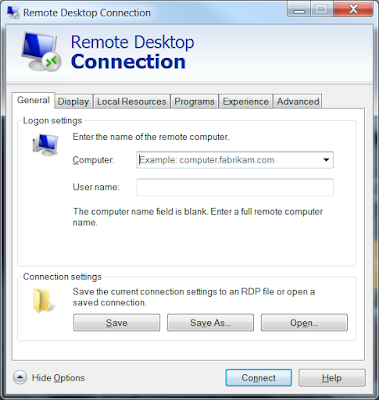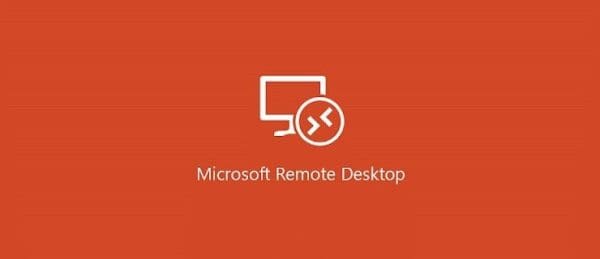Similar to TeamViewer a remote desktop connection enables remote access to another computer. This has the advantage that you don’t need two monitors or have to switch between two systems. Although the Raspberry Pi can be controlled almost exclusively via console, but some programs are to be controlled only by a GUI. On all Windows. Remote Desktop Connection (RDC) is a Microsoft technology that allows a local computer to connect to and control a remote PC over a network or the Internet. It is done through a Remote Desktop Service (RDS) or a terminal service that uses the company's proprietary Remote Desktop Protocol (RDP). Install the client. Choose the client that matches the version of Windows. The new Remote Desktop client (MSRDC) supports Windows 10, Windows 10 IoT Enterprise, and Windows 7 client devices. By default on a Windows Server Product Windows Remote Management (WinRM) is enabled, but Remote Desktop (RDP) is Disabled. On workstation operating systems neither is enabled by default, so if you want to be able to accomplish the following you will need to enable WinRM on the workstations. Dec 15, 2020 TeamViewer is one of the most versatile remote desktop applications available for Windows and all major mobile and desktop platforms. The best part is the application is free for personal and non-commercial use and allows instant remote connection between two computers provided both the computers have the application installed and configured to.

Secure Remote Desktop Documentation
- Secure Remote Desktop Overview
- FAQ
Secure Remote Desktop Overview
This page will provide the information that you need to utilize the new Secure Remote Desktop. This system will provide secure access to your workstation when not on the UCI network.
Minimum Requirements
- Microsoft Windows XP, Windows Vista or Windows 7 running Remote Desktop Client 6.1 or higher
- Mac OS 10.5+ (using Cisco Anywhere VPN and Microsoft Remote Desktop)
Feature Availability
Below you will find a chart detailing what Remote Desktop features are available depending on whether you are on a UCI-managed (on the domain) workstation, non-UCI-managed (not on the domain) or a Mac computer.
Windows Secure Remote Desktop Configuration
Open the Remote Desktop client and click on “Options”.Then click on the “Advanced” tab and then click “Settings…”.
Select “Use these RD Gateway server settings:” (may also say “RT Gateway server settings).
Enter the following information for the “Sever Name:”
tsgate.hs.uci.edu
Important: Check the box “Bypass RD Gateway server for local addresses”.Important: Check the box 'Use my RD Gateway credentials for the remote computer'.
Click “Ok”.
Click on the “General” tab then enter the hostname that you normally connect to (MYHOSTNAME was used in the following example). **Only use the hostname or IP address of your remote machine**
Click “Connect” and you should be able to authenticate with and connect to your remote machine.

Important: When asked to enter in your username, be sure to add HS in front of your id.

FAQ - Frequently Asked Questions
Checking Windows Remote Desktop Client Version
Open Remote Desktop and click on the computer icon in the upper left-hand corner.
Click “About” and then check to make sure your version number is at least 6.1.xxxx
Obtaining Updated Client
Navigate to the following URL in your web browser (or click to open it automatically): http://www.microsoft.com/download/en/details.aspx?id=7208
Click on “Download”.
Click on “Run”.
Then click on “Run” again.
Follow any other prompts necessary to finish the installation. Reboot if necessary.
Create Connection Specific RDP File - *Optional for Windows (Advanced)
If you only connect to one HS computer but frequently connect to machines on other domains, you will find that you need to remove the “tsgate.hs.uci.edu” server to be able to properly connect to your other computers. To work around this you can create a shortcut that connects directly to your HS computer without affecting the server settings for your other connections. To do this, you need to save an .RDP file that has the correct into in it. Make sure you have followed the previous instructions and properly added the server into the advanced settings before proceeding.
With the server information and computer IP address or server already set, click on “Options”. You should see the screen below.
Click “Save As…” and give your .RDP file a name (such as UCI HS Connection in the example).
Select your desktop and the destination for your .RDP file. Under “File name:” enter the desired name for your .RDP file and click “Save”.
Now just double-click your newly created file on the Desktop and authenticate as usual. Now you can launch remote desktop using the old icon, remove the server settings that were setup previously and properly connect to your other computers.
My remote session is slow using the Terminal Server Gateway
Because the remote session is now authenticating and routing through a secure server, is it normal that the connection may be a bit slower than before. This is expected behavior.
I am being asked to type in my credentials twice
The Terminal Server will now require two authentications for remote sessions:
- Authentication for the Terminal Server
- Authentication for your remote workstation
However when the remote desktop client is properly configured, you should not be required to type in your credentials any more than you did before. Click on the appropriate link below for configuration information:
I receive an ‘Access Denied’ error when trying to remote into my workstation
Either you are attempting to remote into the wrong computer due to a typo in the hostname, or DNS has not updated. Check the spelling of your hostname and try again. If you still receive the error, try to remote in using your IP address instead (in the configuration steps, replace the HOSTNAME with your IP ADDRESS). If the problem persists contact the service desk.
A feature that I previously used during remote desktop is no longer available (such as printing, local drive redirection or the clipboard)
Depending on the workstation you are using to establish a remote connection, you may have limited access to some features. This is due to the upgrade in security and compliance. For a detailed list of the features available under any given circumstance please see Feature Availability.
Please contact the HIS service desk at 714-456-3333 with any questions or problems related to Secure Remote Desktop.You can open a ticket relating to problems with Secure Remote Desktop by visiting the following link: Service Now
Windows Remote Desktop is one of the go-to proprietary services for those managing a few remote computers on the same network. It’s free, and it’s very easy to set up and use.
But what if you need to support a larger number of clients outside your network? Will WRD be enough for that? Are there any substantial feature limitations?
Let’s dive into the pros and cons of using Windows Remote Desktop and investigate.
Pros
Rdc Remote Desktop
- It’s free. Remote Desktop is a built-in Windows service that runs on the Remote Desktop Protocol and therefore is completely free. You don’t have to spend a single dollar on a third-party tool if your needs are limited to in-office remote support or accessing your centralized file storage on-the-go.
- It’s easy to set up. Although Windows Remote Desktop is disabled in the operating system by default, it’s very easy to turn it on. Note, however, that Home editions of Windows don’t include this service, but we’ll get back to that soon.
Cons
- It may not be that easy to set up outside the office. If you’re planning to use Windows Remote Desktop outside your office network, you’ll need to configure the remote network to accept incoming connection requests. Besides that, you’ll need to know the IP address of the server along with the login credentials for the remote machine(s) you want to connect to. This is a no-go approach if the remote client requiring assistance is not a tech-savvy person.
- It’s only included in Pro, Business or Ultimate versions of Windows. If you need to support your friends, family members, or a large number of clients running any of the Windows Home versions, then Remote Desktop shouldn’t be your tool of choice. You just won’t be able to connect.
- It doesn’t allow to reboot the remote machine and automatically reconnect. Being able to reboot the remote computer and automatically reconnect is a vital remote support feature. While many third-party applications such as FixMe.IT allow you to do that with a single mouse click, Windows Remote Desktop requires additional actions on your end.
- It locks the remote screen, making the remote user unable to interfere or see anything that you’re doing on their machine. This is one of the biggest problems of Windows Remote Desktop that hasn’t been yet resolved. Furthermore, there are no whiteboard tools that would allow you to demonstrate a certain process to your client.
- It doesn’t really allow to run multiple concurrent sessions. Although there’s a workaround that lets you turn on multiple remote desktop connections on Windows 10 & 8, Microsoft’s built-in tool simply wouldn’t be able to handle dozens of connections with different network settings. Techinline’s FixMe.IT, in turn, allows you to run an unlimited number of concurrent support sessions and easily switch between them in the process.
Conclusion
Rdc Remote Desktop Connection
For local network administration and accessing your office machines remotely, Windows Remote Desktop is a great tool that’s free and easy to set up. However, if your primary goal is to easily perform remote tech support, you’d better check out third-party applications such as FixMe.IT.
Are you using Windows Remote Desktop to access your office machines? Did we miss any of its advantages or disadvantages? Let us know in the comments!
Visit our website to learn more about the FixMe.IT remote desktop application and its features. Join us on Facebook, Twitter, or LinkedIn to get all the latest product and blog updates as they happen.
Rdc Remote Desktop
Related Posts
